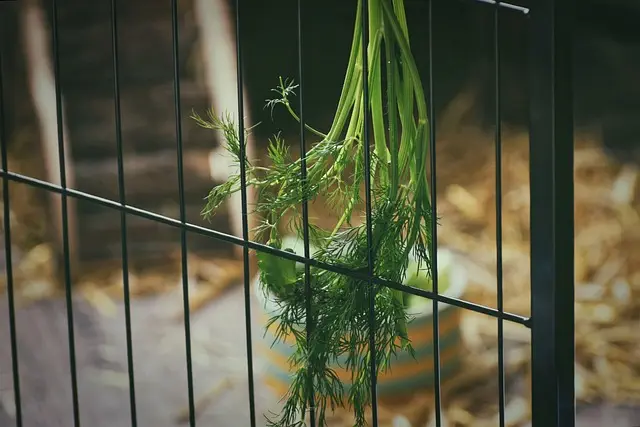Kratom, scientifically known as Mitragyna speciosa, is a tropical evergreen tree whose alkaloids may enhance athletic performance by affecting energy levels, pain perception, and mood. Different strains like Maeng Da and Bali can influence stamina, endurance, focus, and fatigue differently. Athletes should start with a low dose to assess individual sensitivity, as kratom's effects are highly subjective. However, users must be cautious due to the FDA's stance on kratom and its variable legal status. Side effects include nausea, constipation, dependency, and withdrawal symptoms, which can intensify when combined with other substances. Growing kratom requires conditions similar to its Southeast Asian habitat for optimal alkaloid production and purity, including consistent humidity, adequate light, and well-draining soil. Athletes and prospective growers are advised to consult healthcare professionals and comply with local laws before using or cultivating kratom to ensure safety and legality. For those interested in cultivation, the section provides detailed steps for growing a kratom plant at home, highlighting the importance of selecting a strain for consistent effects, maintaining soil quality, climate conditions, and watering frequency to support a healthy plant that produces the desired alkaloids. It is crucial to adhere to local laws regarding kratom cultivation and to approach its use responsibly based on ongoing scientific research.
Discover the potential role of kratom in enhancing athletic performance. This article delves into optimizing sports prowess with kratom, its scientific impact on endurance and strength, and the practicalities of cultivating your own kratom plant through a step-by-step guide. Engage in a nuanced exploration of how to grow a kratom plant alongside its effects on athletic output, ensuring a comprehensive understanding of this botanical performance enhancer and its precautions.
- Optimizing Athletic Performance with Kratom: A Guide to Its Use and Precautions
- The Science Behind Kratom's Effects on Endurance and Strength
- Cultivating Your Own Kratom: A Step-by-Step Approach to How to Grow a Kratom Plant
Optimizing Athletic Performance with Kratom: A Guide to Its Use and Precautions

Kratom, a tropical evergreen tree native to Southeast Asia, has garnered attention within athletic communities for its potential performance-enhancing properties. Mitragyna speciosa, the scientific name for kratom, contains alkaloids that may influence energy levels, pain perception, and mood. When optimizing athletic performance with kratom, it’s crucial to differentiate between strains like Maeng Da and Bali, as they can offer varying effects; some strains may increase stamina and endurance, while others might enhance focus and reduce fatigue. Athletes interested in incorporating kratom into their regimen should start with a low dose to gauge individual sensitivity, as the effects can be highly subjective.
However, it’s imperative to approach the use of kratom with caution. The FDA does not regulate kratom as a safe supplement, and its legal status varies by region. Side effects can range from nausea and constipation to more severe issues like dependency and withdrawal symptoms. Additionally, combining kratom with other substances, including prescription medications, caffeine, or alcohol, can amplify risks and should be avoided. For those considering how to grow a kratom plant for personal use, it’s vital to understand that the conditions must closely mimic its natural habitat, which includes consistent humidity, optimal light exposure, and well-draining soil. This ensures a higher level of control over the plant’s alkaloid content and purity, which is essential for safety and efficacy. Always consult with healthcare professionals before integrating kratom into an athletic performance regimen, and adhere to local laws and regulations regarding its use and cultivation.
The Science Behind Kratom's Effects on Endurance and Strength

Kratom, a tropical evergreen tree native to Southeast Asia, has garnered attention within athletic communities for its potential ergogenic properties. The effects of kratom on endurance and strength are rooted in its interaction with the body’s opioid receptors, which can influence pain perception, fatigue, and energy levels. Mitragynine and 7-hydroxymitragynine, two primary alkaloids found in kratom leaves, are believed to play a significant role in these effects. These compounds can stimulate the central nervous system, leading to increased alertness and reduced fatigue sensation, which may enhance athletic performance. Furthermore, kratom’s analgesic qualities can help athletes push through discomfort without overreliance on synthetic painkillers.
For those interested in incorporating kratom into their regimen, understanding how to grow a kratom plant might offer a sustainable and controlled source. Cultivation requires specific conditions, including warm temperatures, high humidity, well-drained soil, and ample sunlight. Careful attention to the soil pH and regular watering are crucial for optimal growth. As with any supplement, it’s essential to consult with a healthcare provider before integrating kratom into an athletic performance enhancement plan, considering its potential interactions with other medications and its regulatory status in different regions. The scientific community continues to study the effects of kratom to fully understand its implications for athletic training and performance support.
Cultivating Your Own Kratom: A Step-by-Step Approach to How to Grow a Kratom Plant

Cultivating your own Kratom plant can be a rewarding endeavor, offering a direct source of this botanical performance enhancer. Known scientifically as Mitragyna speciosa, Kratom is native to Southeast Asia and has been traditionally used in that region for its stimulant and sedative properties. Growing Kratom requires careful attention to soil quality, climate conditions, and watering schedules to ensure a healthy plant that yields the desired alkaloids.
To initiate your cultivation journey, select a strain of Kratom known for its consistent qualities if you’re aiming for a specific effect. Start with a seed or a cutting from a mature, healthy Kratom tree. Ensure that you have a controlled environment that can mimic the humid and semi-shaded conditions of its natural habitat. Plant your Kratom in well-draining soil rich in organic matter, as it prefers slightly acidic to neutral pH levels. Water your plant consistently, allowing the soil to dry out slightly between waterings to prevent over-saturation, which can lead to root rot. Fertilize with a balanced, organic fertilizer during the growing season to promote robust growth. As your Kratom matures and begins to produce leaves, monitor their color and vein patterns, as these factors influence the plant’s alkaloid content and, consequently, its effects. With the right conditions and care, your home-grown Kratom plant can thrive, providing you with a natural source of this herbal supplement for athletic performance support. Remember to follow local laws and regulations regarding the cultivation of Kratom, as they may vary by region.
Incorporating kratom into an athletic regimen may offer performance benefits, as detailed in “Optimizing Athletic Performance with Kratom: A Guide to Its Use and Precautions.” The scientific exploration in “The Science Behind Kratom’s Effects on Endurance and Strength” reveals promising insights into how this plant can enhance physical capabilities. For those interested in a sustainable and controlled approach, our guide on “Cultivating Your Own Kratom: A Step-by-Step Approach to How to Grow a Kratom Plant” provides valuable information on nurturing your own kratom plants, ensuring quality and safety. By understanding both the scientific rationale and practical cultivation methods, athletes can make informed decisions about incorporating kratom into their training and performance routines.






